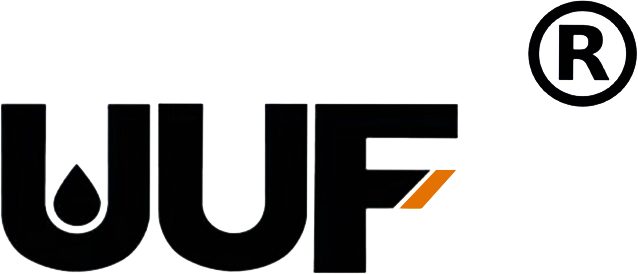Understanding Rotary Shaft Seals: Essential Components for Automotive Applications
Time:
2025-07-07
Rotary shaft seals are integral components in various automotive applications, particularly in the context of rubber sealing solutions. These seals serve a vital function in preventing leakage of fluids while protecting the internal mechanisms of machinery from contaminants such as dirt, dust, or moisture. Understanding rotary shaft seals is essential for professionals in the automotive and rubber
Rotary shaft seals are integral components in various automotive applications, particularly in the context of rubber sealing solutions. These seals serve a vital function in preventing leakage of fluids while protecting the internal mechanisms of machinery from contaminants such as dirt, dust, or moisture. Understanding rotary shaft seals is essential for professionals in the automotive and rubber sealing industries.
At their core, rotary shaft seals are designed to provide a reliable barrier between rotating shafts and stationary components. They are often utilized in applications such as engine assemblies, transmission systems, and wheel bearings, where maintaining the integrity of lubricants is crucial for optimal performance and longevity of the vehicle. The primary function of these seals is to minimize fluid leakage and maintain a clean operational environment, which ultimately enhances the efficiency of the machinery.
There are several types of rotary shaft seals, including lip seals, mechanical seals, and labyrinth seals, each designed for specific applications and requirements. Lip seals, the most common type, feature a flexible lip that makes contact with the rotating shaft, creating a seal that prevents fluid loss. Mechanical seals, on the other hand, use a combination of rotating and stationary parts to achieve a leak-proof design, making them suitable for high-pressure environments. Labyrinth seals are structured to create a complex path for contaminants, effectively reducing the possibility of leakage without creating friction that could hinder rotational movement.
Material selection is another critical aspect when it comes to rotary shaft seals. Common materials include rubber compounds such as nitrile, fluorocarbon, and silicone, each offering distinct advantages depending on the application. For instance, nitrile rubber is well-suited for oil resistance, making it ideal for automotive applications, while fluorocarbon provides superior chemical resistance for more demanding environments. The choice of material not only affects the seal's durability but also its ability to withstand varying temperatures and pressures.
Moreover, proper installation and maintenance of rotary shaft seals are essential for achieving optimal performance. Professionals must pay attention to factors such as the surface finish of the shaft, alignment, and the application of appropriate lubrication to enhance the seal's longevity. Regular inspection and timely replacement of worn-out seals can prevent costly repairs and enhance the overall efficiency of automotive systems.
In conclusion, rotary shaft seals are crucial components in the automotive industry, serving to protect internal systems from leakage and contamination. Professionals in the field must be well-versed in the various types of seals, material properties, and best practices for installation to ensure the reliability and efficiency of automotive applications. Understanding these factors will enable industry players to make informed decisions when it comes to selecting and implementing rotary shaft seals in their designs.
At their core, rotary shaft seals are designed to provide a reliable barrier between rotating shafts and stationary components. They are often utilized in applications such as engine assemblies, transmission systems, and wheel bearings, where maintaining the integrity of lubricants is crucial for optimal performance and longevity of the vehicle. The primary function of these seals is to minimize fluid leakage and maintain a clean operational environment, which ultimately enhances the efficiency of the machinery.
There are several types of rotary shaft seals, including lip seals, mechanical seals, and labyrinth seals, each designed for specific applications and requirements. Lip seals, the most common type, feature a flexible lip that makes contact with the rotating shaft, creating a seal that prevents fluid loss. Mechanical seals, on the other hand, use a combination of rotating and stationary parts to achieve a leak-proof design, making them suitable for high-pressure environments. Labyrinth seals are structured to create a complex path for contaminants, effectively reducing the possibility of leakage without creating friction that could hinder rotational movement.
Material selection is another critical aspect when it comes to rotary shaft seals. Common materials include rubber compounds such as nitrile, fluorocarbon, and silicone, each offering distinct advantages depending on the application. For instance, nitrile rubber is well-suited for oil resistance, making it ideal for automotive applications, while fluorocarbon provides superior chemical resistance for more demanding environments. The choice of material not only affects the seal's durability but also its ability to withstand varying temperatures and pressures.
Moreover, proper installation and maintenance of rotary shaft seals are essential for achieving optimal performance. Professionals must pay attention to factors such as the surface finish of the shaft, alignment, and the application of appropriate lubrication to enhance the seal's longevity. Regular inspection and timely replacement of worn-out seals can prevent costly repairs and enhance the overall efficiency of automotive systems.
In conclusion, rotary shaft seals are crucial components in the automotive industry, serving to protect internal systems from leakage and contamination. Professionals in the field must be well-versed in the various types of seals, material properties, and best practices for installation to ensure the reliability and efficiency of automotive applications. Understanding these factors will enable industry players to make informed decisions when it comes to selecting and implementing rotary shaft seals in their designs.
Keyword:
Rotary Shaft seal


















